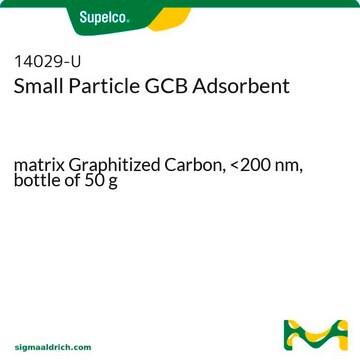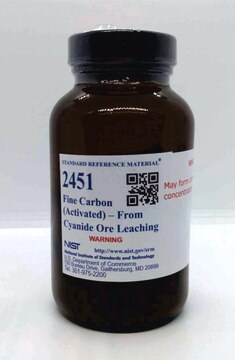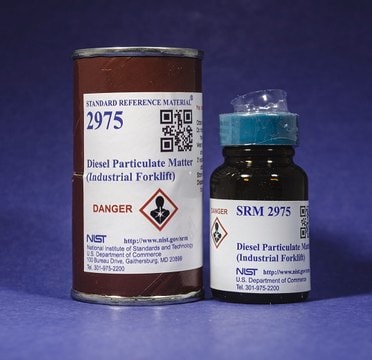699624
Graphite
nanopowder, graphitized, less than 250 ppm Al, Ti, Fe, Ni, Cu, and Zn combined
Sinónimos:
Carbon, mesoporous, Graphite nanoparticles
About This Item
Productos recomendados
Nivel de calidad
formulario
nanopowder
superficie
50-100 m2/g
tamaño de poro
0.25 cm3/g pore volume (typical)
137 Å average pore diameter (typical)
bp
4827 °C
mp
3654-3697 °C
densidad
1.828 g/cm3 (absolute, typical)
densidad aparente
0.075 g/cm3
cadena SMILES
[C]
InChI
1S/C
Clave InChI
OKTJSMMVPCPJKN-UHFFFAOYSA-N
¿Está buscando productos similares? Visita Guía de comparación de productos
Descripción general
Aplicación
Código de clase de almacenamiento
11 - Combustible Solids
Clase de riesgo para el agua (WGK)
nwg
Punto de inflamabilidad (°F)
Not applicable
Punto de inflamabilidad (°C)
Not applicable
Equipo de protección personal
dust mask type N95 (US), Eyeshields, Gloves
Elija entre una de las versiones más recientes:
¿Ya tiene este producto?
Encuentre la documentación para los productos que ha comprado recientemente en la Biblioteca de documentos.
Los clientes también vieron
morphology and loss of barrier function in human
bronchial epithelium at noncytotoxic doses
Artículos
Mesoporous Materials include a range of high surface area porous silicates with applications in gas adsorption, drug delivery, diagnostics and catalysis.
Mesoporous Materials Synthesis
Recent demand for electric and hybrid vehicles, coupled with a reduction in prices, has caused lithium-ion batteries (LIBs) to become an increasingly popular form of rechargeable battery technology.
Li-ion batteries are currently the focus of numerous research efforts with applications designed to reduce carbon-based emissions and improve energy storage capabilities.
Nuestro equipo de científicos tiene experiencia en todas las áreas de investigación: Ciencias de la vida, Ciencia de los materiales, Síntesis química, Cromatografía, Analítica y muchas otras.
Póngase en contacto con el Servicio técnico






